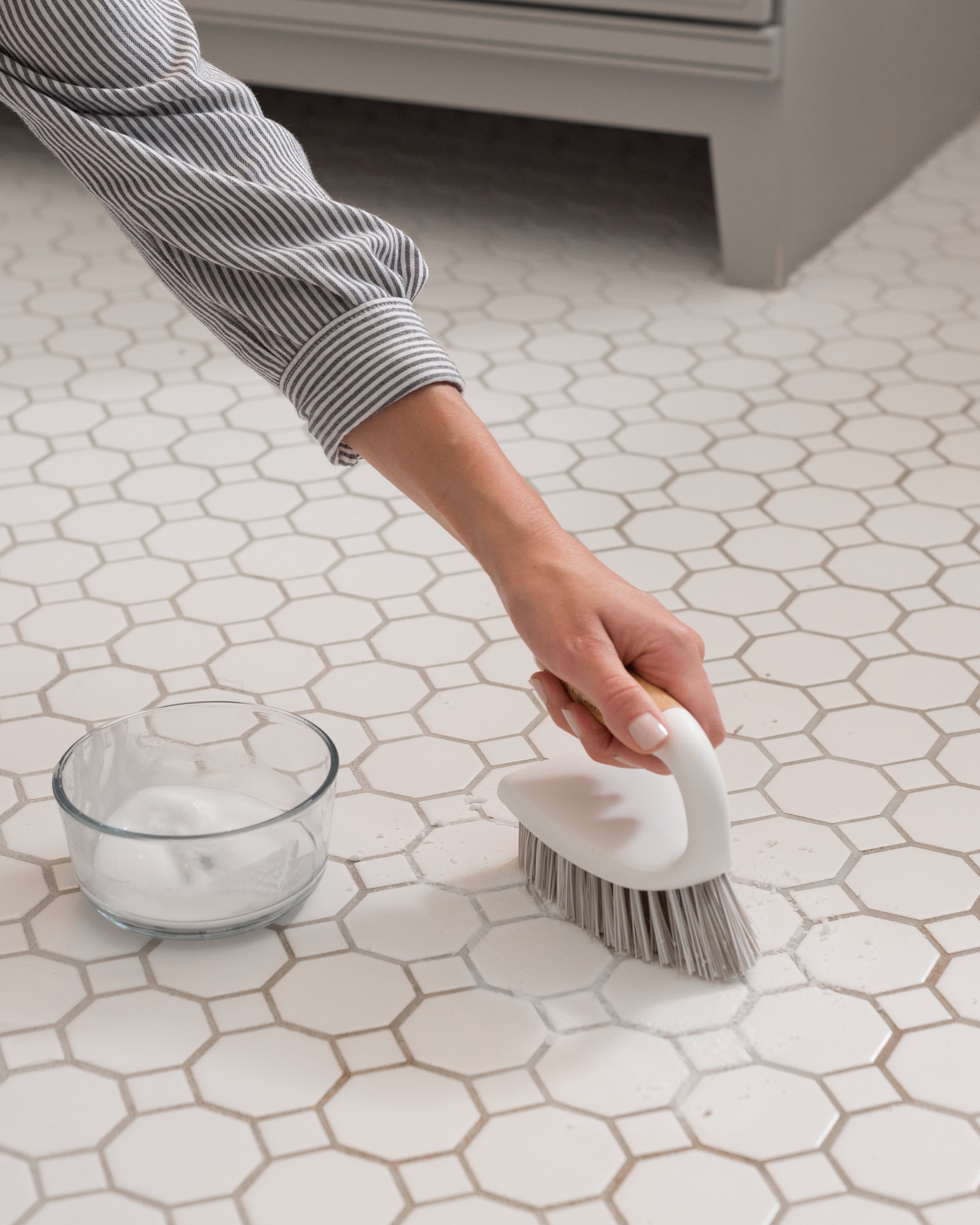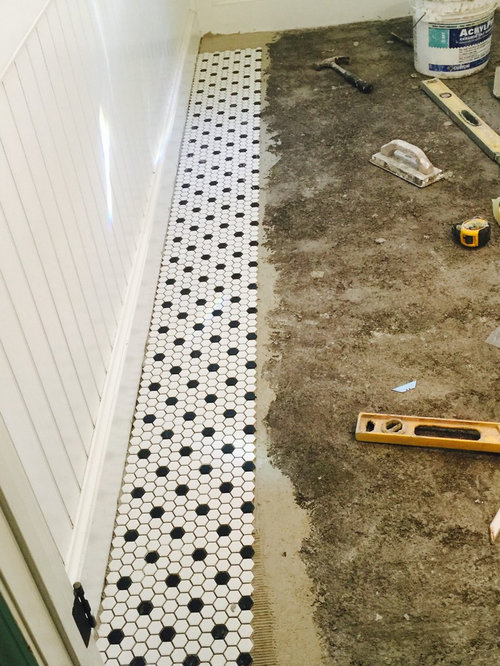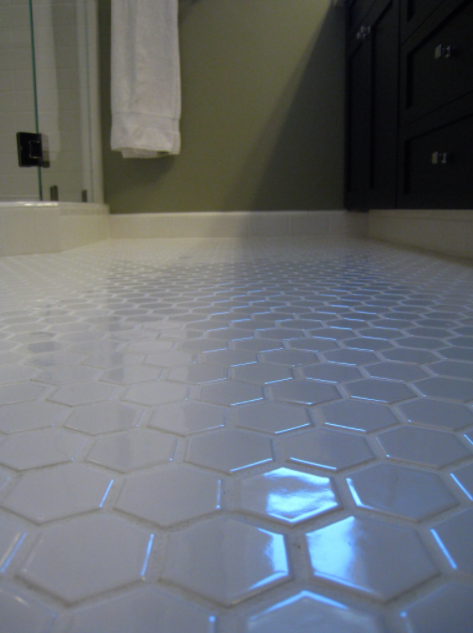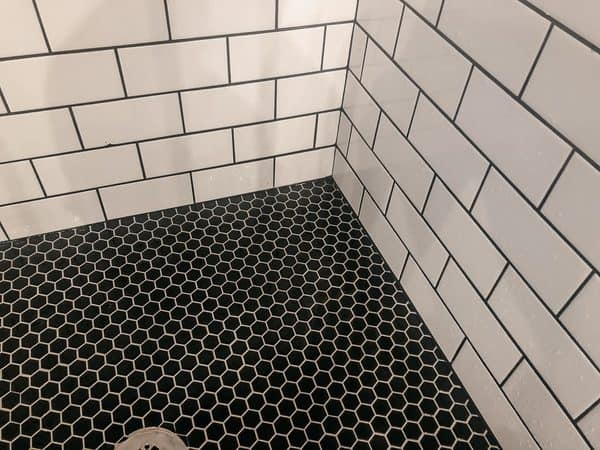Cleaning hex tile floors requires a systematic approach to maintain their distinctive look and durability. Hex tiles, known for their geometric aesthetic, are commonly found in bathrooms and kitchens due to their water-resistant properties and classic design. However, they can be challenging to clean due to the many grout lines and the potential for dirt accumulation in their corners. A thorough cleaning regimen not only preserves the visual appeal of hex tiles but also extends their lifespan. Here’s a detailed guide to effectively clean hex tile floors.
Images about Cleaning Hex Tile Floor
Cleaning Hex Tile Floor
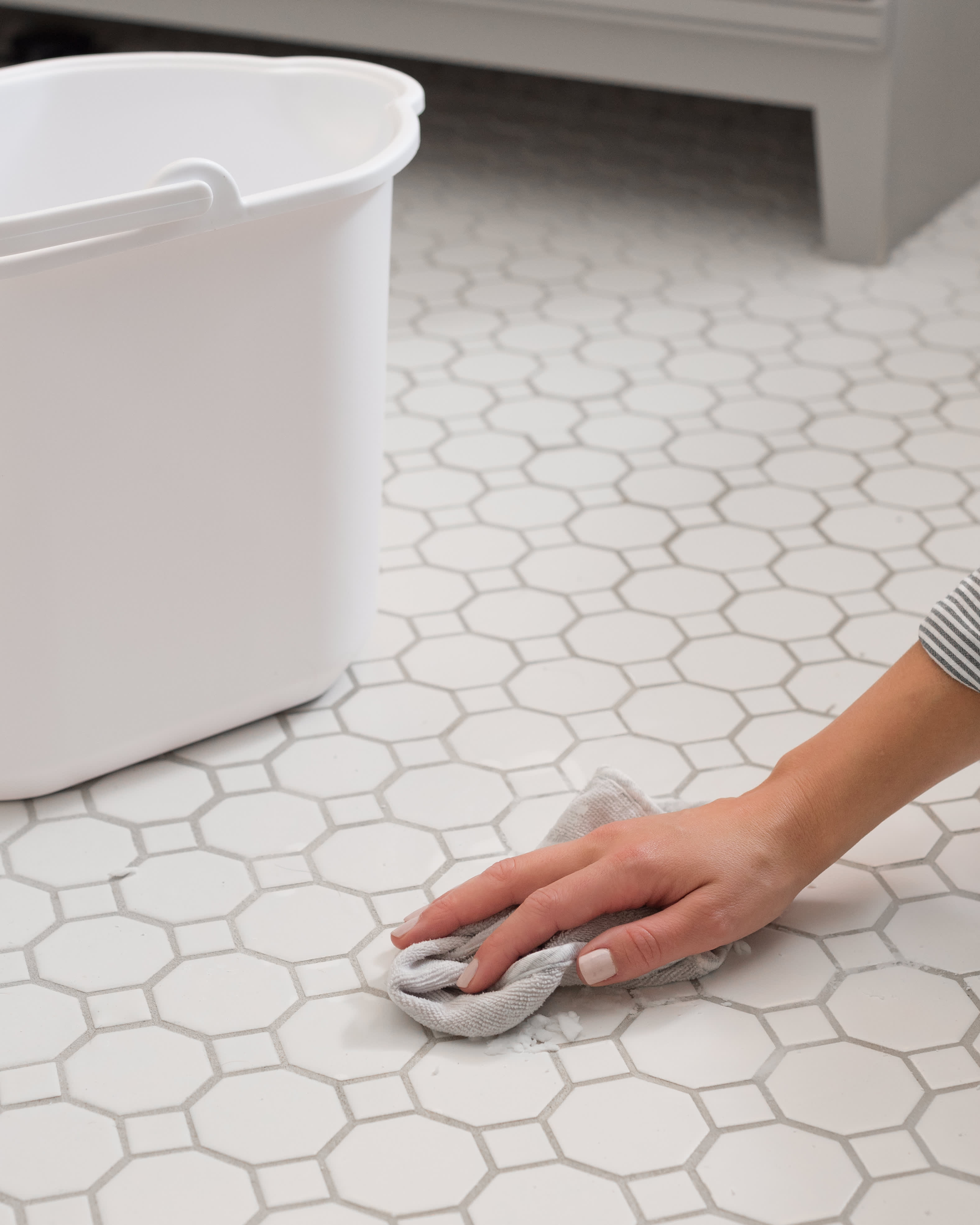
First, it’s important to start with regular sweeping or vacuuming to remove loose dirt and debris. Dust and grit can act like sandpaper on the tile surface, scratching and dulling the finish over time. A vacuum with a brush attachment is ideal as it can reach into the grout lines and remove hidden dirt particles. If using a broom, opt for one with soft bristles to avoid scratching the tiles. Regular sweeping ensures that dirt doesn’t accumulate and become more difficult to remove later on.

Next, prepare a gentle cleaning solution. Harsh chemicals and abrasive cleaners can damage both the tiles and the grout. A mixture of warm water and a mild dish soap or a pH-neutral floor cleaner is generally safe for hex tile floors. Avoid acidic cleaners like vinegar or lemon juice, which can erode grout over time. For the cleaning process, use a soft mop or a microfiber cloth. Dip it in the cleaning solution, wring out excess liquid to prevent soaking the grout, and gently mop the floor. For stubborn spots, a soft-bristled brush can be used to gently scrub the affected areas.
Pay special attention to the grout lines, as they are prone to staining and discoloration. Over time, grout can absorb dirt and oils, leading to an unsightly appearance. To clean the grout, create a paste with baking soda and water, apply it to the grout lines, and let it sit for 5-10 minutes. Then, scrub the grout with a toothbrush or a small scrub brush. Rinse thoroughly with clean water to remove any residue. For deeply stained grout, a grout cleaner or a steam cleaner may be necessary. Ensure the grout is properly sealed after cleaning to prevent future staining.
In addition to routine cleaning, periodic deep cleaning is essential for maintaining hex tile floors. Deep cleaning involves using a more concentrated cleaning solution and possibly a more intensive scrubbing tool, like a steam mop or an electric scrubber. Begin by clearing the floor of any furniture or rugs. Apply the cleaning solution and allow it to sit for a few minutes to break down dirt and grime. Use the scrubber to thoroughly clean the tiles and grout. After scrubbing, rinse the floor with clean water and dry it with a soft towel to prevent water spots.
Finally, sealing both the tiles and the grout can provide an added layer of protection. Sealers create a barrier that repels water, oils, and stains, making the tiles easier to clean and maintain. There are different types of sealers available, including penetrating sealers and surface sealers. Penetrating sealers soak into the porous surface of the grout, providing long-lasting protection without altering the appearance of the tiles. Surface sealers, on the other hand, create a protective layer on top of the tiles and grout. It’s important to follow the manufacturer’s instructions when applying a sealer and to reapply it periodically as recommended.
Maintaining the beauty and functionality of hex tile floors involves a combination of regular sweeping, gentle cleaning, grout care, periodic deep cleaning, and sealing. By adhering to these practices, you can ensure that your hex tile floors remain a stunning and durable feature of your home. This comprehensive approach not only enhances the appearance of the tiles but also significantly extends their lifespan, making them a worthwhile investment in both style and practicality.
Grout Cleaner Learn How to Clean Grout Naturally
Honed hex marble tile cleaning?
Old Bathroom Tile Cleaning
How to Clean Tile Floors, Step by Step With Photos Apartment Therapy
Hex tile floor- what shade for grout?
Pin on Flooring
Best Way to Clean Tile Floors Which Will Amaze You – Home and Gardens
How to Clean Tile Floors, Step by Step With Photos Apartment Therapy
How to clean grout and tile-the easy way! – Home like you mean it
Related Posts:
- Dining Room Tile Floor Designs
- Budget Tile Flooring
- Cheap Tile Flooring Ideas
- Restore Tile Floor Shine
- How To Clean Tile Floors With Bleach
- Traditional Bathroom Tile Floor
- Natural Ceramic Tile Floor Cleaner
- Bedroom Tile Floor Ideas
- Commercial Grade Tile Flooring
- Faux Stone Tile Flooring
Cleaning Hex Tile Floor: A Comprehensive Guide
Hex tile flooring is a beautiful addition to any home. It’s classic, timeless, and can add a touch of elegance to any room. But like any flooring material, it requires regular cleaning and maintenance to keep it looking its best. This comprehensive guide provides a detailed overview of how to properly clean hex tile flooring for optimal results.
Preparing for Cleaning
Before beginning the cleaning process, it’s important to ensure the area is prepared properly. Begin by sweeping or vacuuming the area to remove any dust and debris. For areas with heavy dirt or grime buildup, it may be necessary to use a mop with a bucket of warm, soapy water to pre-clean the floor. Be sure to rinse the area thoroughly afterwards and dry with a clean, soft cloth.
Cleaning Solutions
The next step is to choose an appropriate cleaning solution for hex tile floors. Generally, a mild detergent or soap is all that’s needed. Avoid using any harsh chemicals or abrasive cleaners, as these can damage the tile’s glazed surface. Vinegar is also an effective cleaning solution and can be used in place of detergents or soaps. For particularly stubborn stains or dirt, baking soda can be sprinkled over the area and scrubbed in with a damp cloth before rinsing with water.
Application Method
Once you’ve chosen an appropriate cleaning solution, it’s time to apply it to the floor. The best way to do this is with a mop and bucket of warm water mixed with the cleaning solution. Start at one corner of the room and work your way towards the other end in straight lines for even coverage. After finishing one section of the floor, rinse the mop in the bucket and wring out any excess water before moving onto the next section. Be sure not to leave excess water on the floor after rinsing; this can cause damage to the tile if left unattended for too long.
Drying
Once you’ve finished cleaning, it’s important to thoroughly dry the area before allowing foot traffic back on it. To do this, use a microfiber cloth or towel to wipe up any remaining moisture from the tile surface. Avoid using paper towels as they can leave behind lint and residue that can attract more dirt and dust. Once you’re satisfied that all moisture has been removed from the area, you can allow foot traffic back on the floor.
Q: What should I use to clean my hex tile floors?
A: Mild detergents or soaps are generally safe for hex tile floors; however, avoid using any harsh chemicals or abrasives as these can damage the tile’s glazed surface. Vinegar also works well as an alternative cleaning solution and baking soda can be used for tougher stains or dirt buildup.
Q: How often should I clean my hex tile floors?
A: Depending on usage, it’s recommended that hex tile floors are cleaned at least once per month using an appropriate cleaning solution (as detailed in this guide). Additionally, regular sweeping or vacuuming between cleans can help remove any dust or debris buildup that could cause permanent damage to the tiles over time.
Q: What should I avoid when cleaning hex tile floors?
A: When cleaning hex tile floors, it’s important to avoid using any harsh chemicals or abrasives as these can damage the tile’s glaze finish. Additionally, avoid leaving pools of water on the tiles after rinsing; this can cause permanent damage if left unattended for too long. Lastly, paper towels should be avoided when wiping away excess moisture; lint and residue left behind by paper towels can attract more dirt and dust over time.






